2019 Chevy Suburban Fuel Efficiency & Gas Consumption
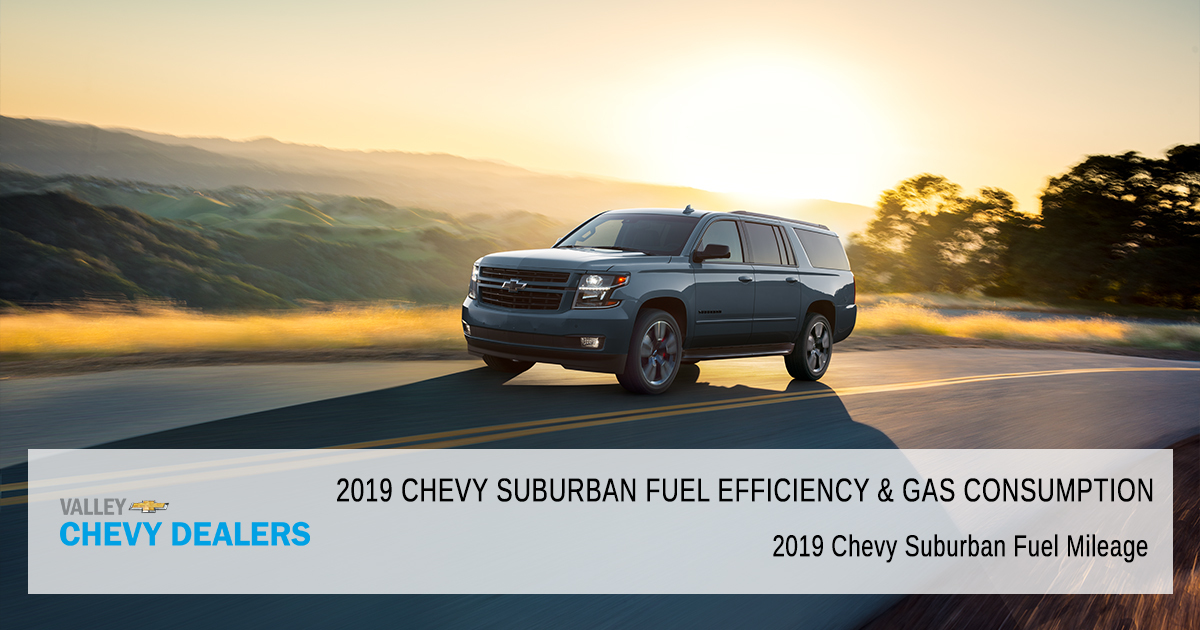
The 2019 Chevy Suburban is a great choice for a large SUV that can handle anything you throw at it. Camping trips, carpools, family road trips, and trailer hauling are all fair game.
Even though it prioritizes a large size, this vehicle also aims to get you better fuel efficiency and miles per gallon. No one wants to spend a fortune on gas, so Chevy has worked to make the Suburban gas mileage as efficient as possible.
Read on to learn more details on the mileage you can expect from your Suburban and how to make the most of your vehicle’s capabilities.
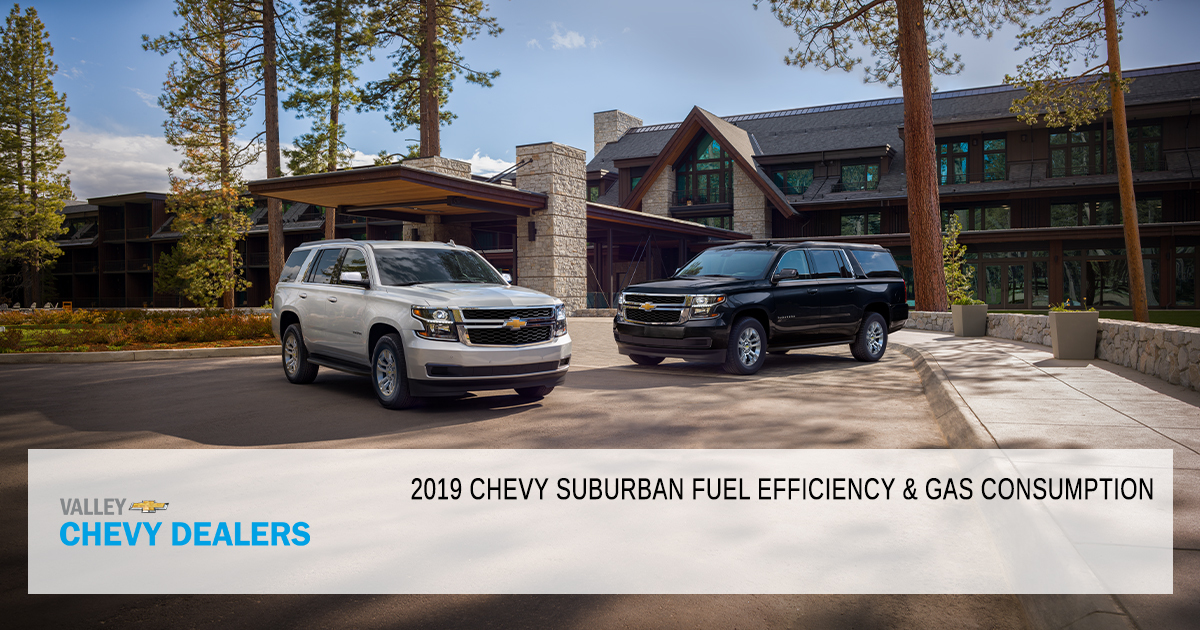
2019 Chevy Suburban Gas Mileage
Fuel mileage is defined as the amount of fuel needed to drive a specific number of miles. The Suburban fits eight people, still leaving plenty of room for bags and gear.
It has a 5.3L V8 engine powerful enough to haul up to 6,300 pounds of cargo and a six-speed transmission. It has about twice the capacity of a smaller vehicle, so those who need space and power will find this fuel mileage competitive with other vehicles.
The gas tank holds enough fuel to let you go a maximum of 434 miles without stopping on the streets, or 651 on the highway.
-
With 2WD, it can go 100 miles on 5.6 gallons of gasoline
-
With 4WD, it can go 100 miles on 6.3 gallons
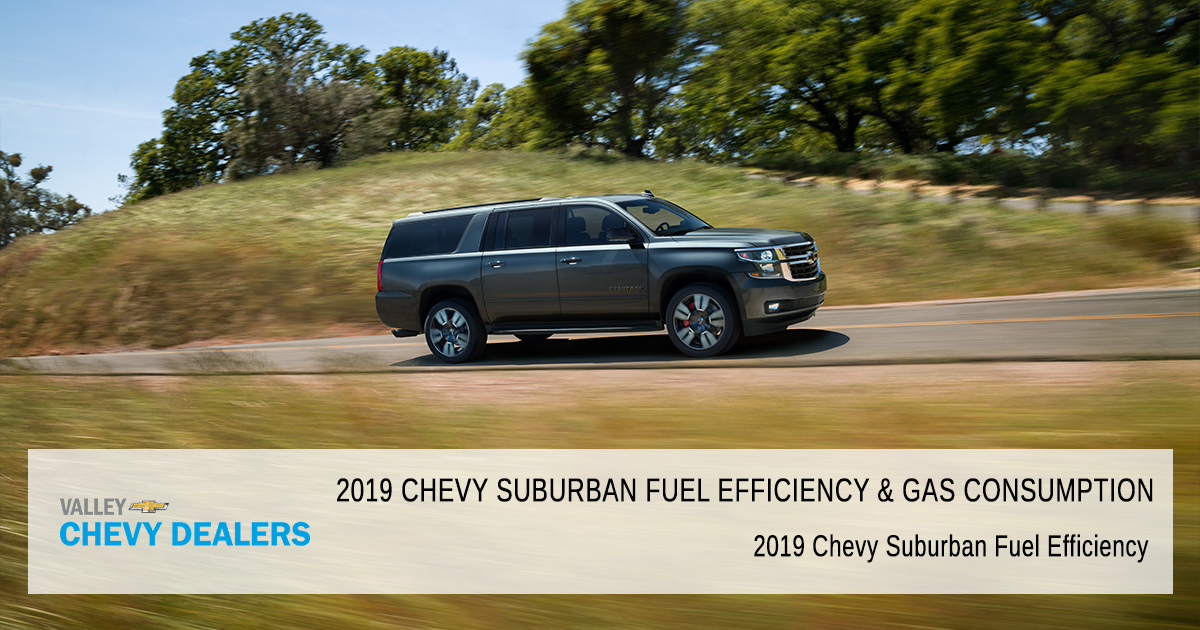
2019 Chevy Suburban Fuel Efficiency
Fuel efficiency describes the amount of energy your vehicle can take from a given amount of fuel. It’s measured in miles per gallon. In ideal conditions, Suburban gas mileage is:
-
22 MPG on highways
-
15 MPG on streets
-
18 MPG average
EPA tests mimic different driving conditions to give the most accurate estimations of fuel consumption. Chevy Suburban gas usage depends on driving conditions like temperature, air conditioning use, low tire pressure and more.
Make sure to take these factors into consideration when possible to save on gas. Each trim level includes large, all-season tires to take you from wet roads to hot, dry ones with ease.
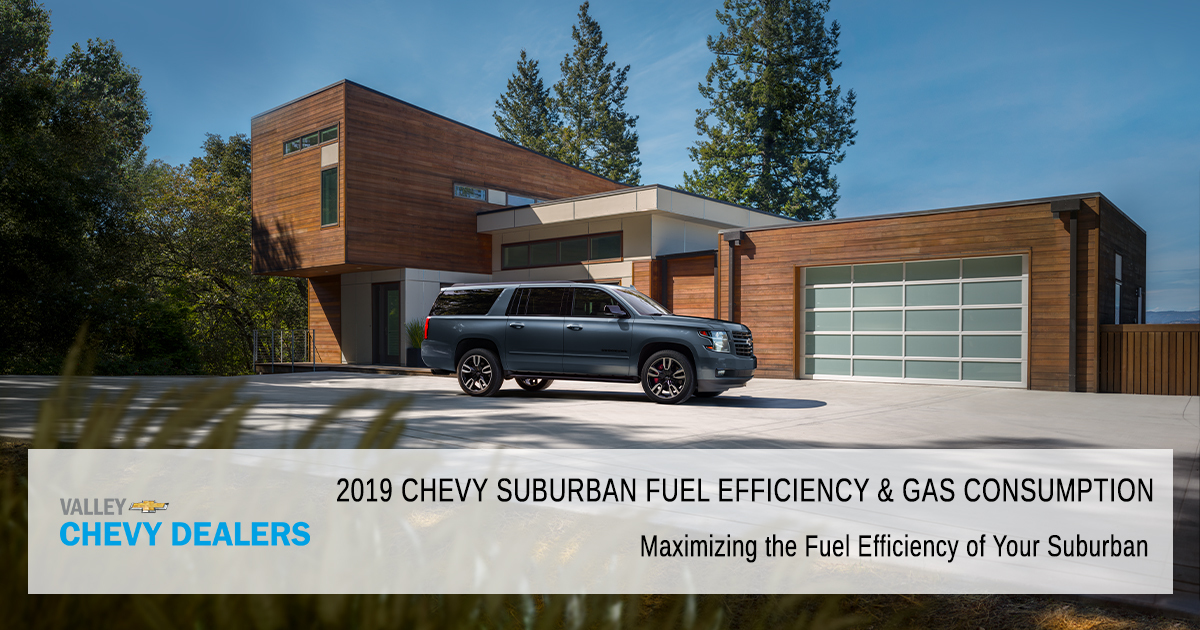
Maximizing the Fuel Efficiency of Your Suburban
Certain driving situations will decrease your Suburban MPG. For example, using 4-wheel drive decreases the MPG of your suburban. With 2-wheel drive, you can get up to 22 MPG on the highway and 15 on streets, which averages out to 18 MPG overall. 4-wheel drive decreases MPG to 21 on the highway and 14 on streets, for an average of 16 MPG.
Using E85 fuel, which is 85% ethanol and only 15% gasoline, decreases mileage further. With 2WD, it goes down to 13 MPG combined, and with 4WD it is 13 MPG combined. Using the cruise control included with each trim level on long, straight stretches of road will also help you maximize fuel efficiency.
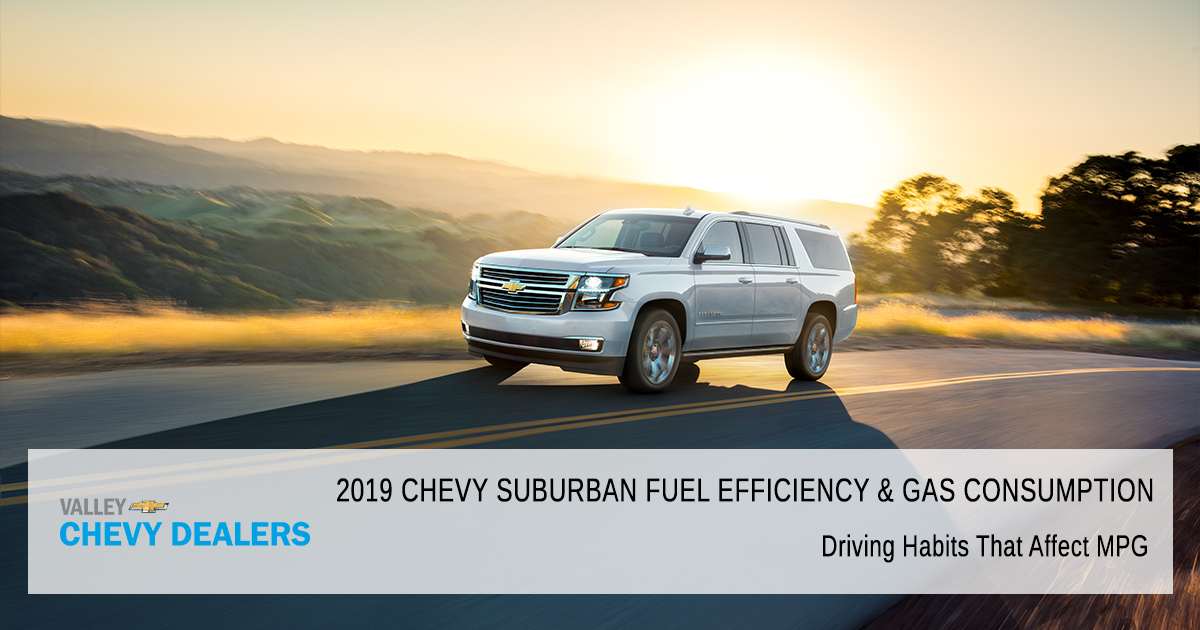
Driving Habits That Affect Gas Mileage
The way you drive can meaningfully affect your vehicle’s fuel efficiency. To get the best mileage out of your SUV, try incorporating these tips as much as possible.
Driving steadily will maximize your efficiency, while aggressive driving lowers your mileage by between 15% to 30%. Towing a trailer or other cargo decreases MPG, and EPA tests don’t account for the extra weight or the drag created by extra storage.
A cold engine is less efficient, so driving in the cold or making frequent short trips means lower fuel efficiency since a short drive doesn’t give it time to warm up.
Air conditioning decreases efficiency and takes up energy that would otherwise be used for driving. Difficult terrain in mountainous or hilly areas also uses up more fuel than driving on smooth, paved ground.
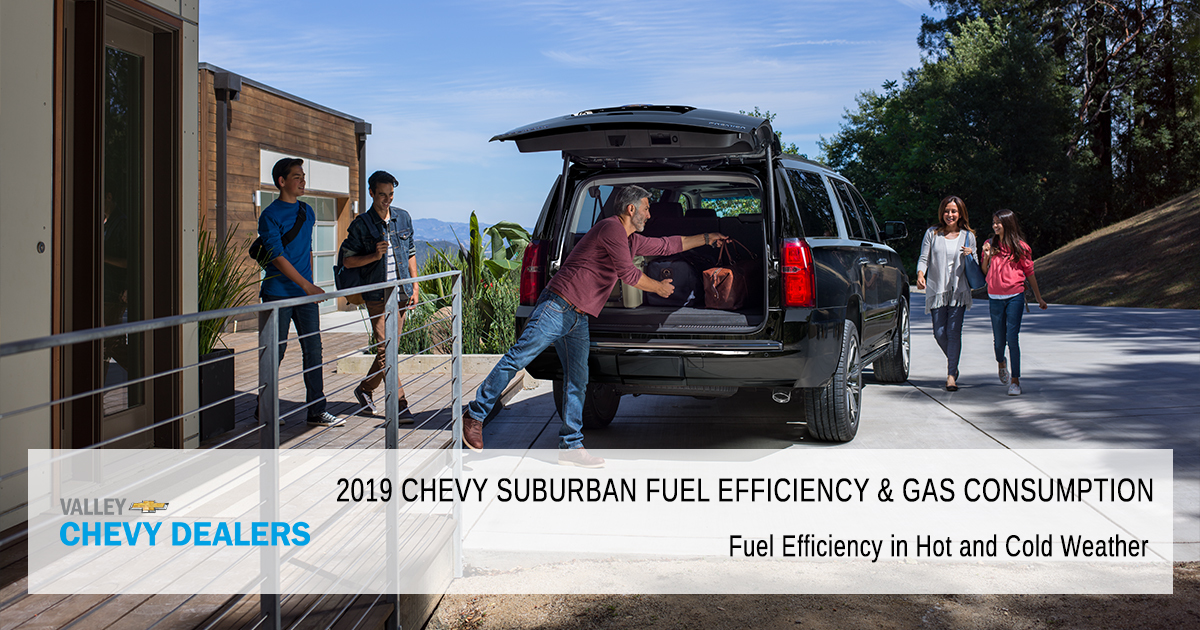
Fuel Efficiency in Hot and Cold Weather
Extreme weather of any kind presents a challenge for fuel-efficiency. This is especially true for cold weather. The friction in your engine and vehicle fluids increases when the temperature drops and the engine takes longer to warm up to its most efficient temperature.
Tire pressure often decreases in colder weather, so check the pressure often to keep things rolling smoothly. Try doing the following to offset the many disadvantages of cold weather:
-
Park in a garage when possible
-
Combine trips and avoid short drives
-
Avoid idling for more than 30 seconds, and instead, use actual driving to warm up the engine
-
Use oil intended for cold weather use
-
Remove any accessories not in use, like bike racks or cargo storage, to decrease drag
The challenges of driving in hot weather mostly revolve around how to cool down while driving.
When should you use the air conditioning versus roll down the windows? AC reduces fuel efficiency by up to 25%, but on highway speeds, it is more efficient than rolling down the windows.
Lowered windows create drag, and at high speeds that outweighs the benefits of not using AC. On the streets, they are a more efficient option than using AC. Here are some other tips to try:
-
Roll down the windows to let hot air out before turning on the AC
-
Only turn on the AC once you’re driving, instead of idling while it’s running
-
Use a shade to keep car temperatures lower
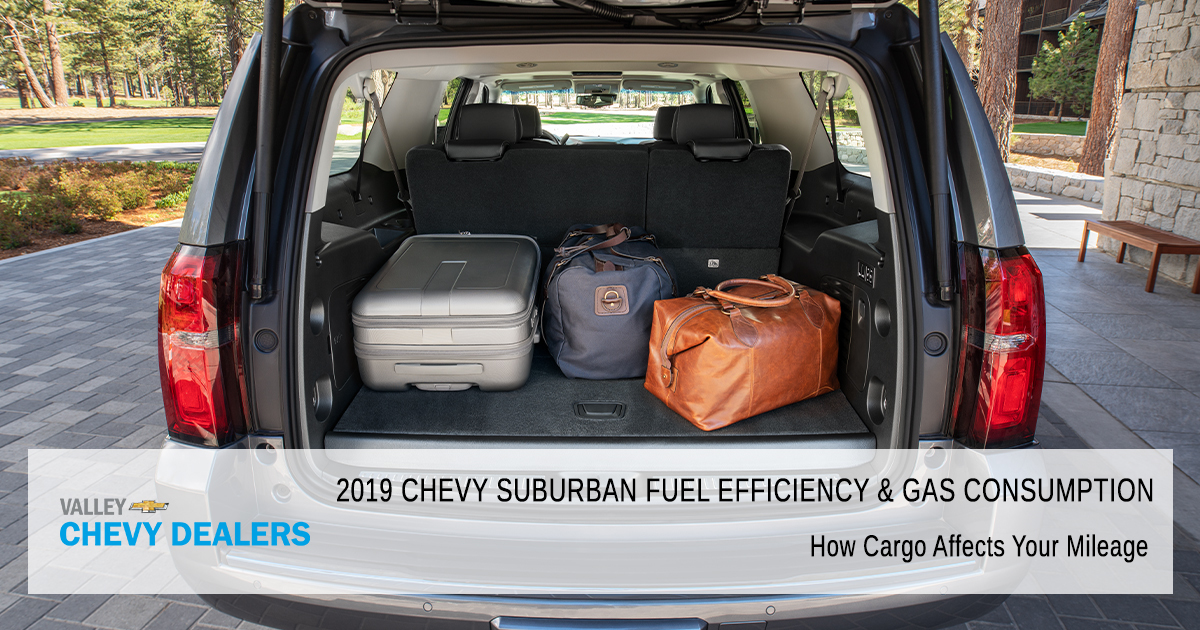
How Cargo Affects Your Mileage
For SUV owners, hauling extra cargo and special outdoor gear is just part of life. However, removing gear and cargo racks when they’re not in use will make a noticeable difference in your fuel consumption.
Each extra 100 pounds decreases efficiency by about 1%, though the impact is lower on large vehicles like the Suburban than compact cars. Whenever possible, avoid using a cargo rack and store items inside instead.
Cargo racks make your truck less aerodynamic and the wasted fuel adds up, especially on long trips.
EPA Fuel Economy Tests Explained
Every year, the EPA tests new vehicles on the market so it can publish a formal MPG estimate. It does this for all except those vehicles over a certain weight, such as SUVs over 10,000.
These tests are done in a lab environment with a series of tests done across all vehicle types. The car’s wheels are placed on machines that rotate them in place to simulate the movement of driving.
Resistance is added to the machines to account for the vehicle’s weight and wind drag.
Once the settings are in place, the vehicle is driven through conditions that are similar to different types of driving trips, such as the smooth, continuous driving one does on a freeway or the stop-and-start driving that happens in the city.
The tests also account for MPG at high speeds, low temperatures, and air conditioning. Fuel usage is measured by collecting the exhaust from the tailpipe and then assessing the amount of carbon burned.
This method of measurement is actually more accurate than using a fuel gauge.
Doing research will help you narrow down your search for your dream car. Looking at a car’s features and mileage helps you meet your practical criteria, but there’s nothing like actually driving it.
Get behind the wheel and experience the power of a 2019 Chevy Suburban at your nearest Phoenix Area Chevy dealer.

